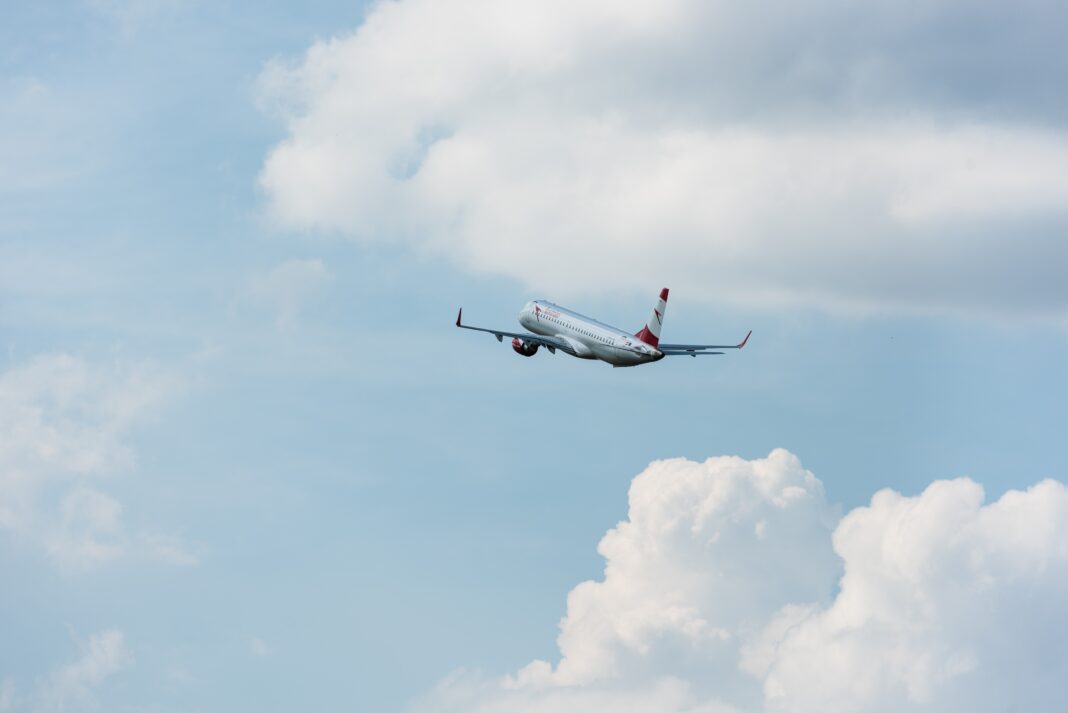News just broke of a plane crashing into a house in Santa Fe, New Mexico on July 18.
The crash occurred at 9:02 am, according to the Santa Fe County Sheriff’s Office. A plane was ready to take off from Santa Fe Municipal Airport, but shortly after crashed into a single family home not far from where the airport is located.

When asked, sheriff’s officials said they didn’t believe anyone was home at the time of the crash, but the home did catch fire. Fire crews were working to contain that fire, and officials have closed Interstate 25 frontage road from El Sol Court all the way to Los Pinos due to the crash.
Footage from KOAT shows smoke and flames billowing from the house, and the plane which crashed was a twin engine Cessna. The crash occurred just two minutes into takeoff.
According to KOB 4, State Police identified the pilot as Randolph Sherman, a 72-year-old man from Los Angeles.
New audio has been released from the plane’s cockpit. KRQE reports that Sherman can be heard reporting to air traffic control that one of his engines failed.
“There really does need to be an investigation into what happened here,” said Santa Fe plane crash attorney Brian Colón. “This is an extremely rare event, even nationally, and the liability issues will be complex. We’re grateful no one was home at the time of the crash, and we pray no neighbors were injured.”
If you or someone you know has been injured in a Santa Fe plane crash, contact the personal injury attorneys at Singleton Schreiber by calling 505-605-2076 or by emailing info@singletonschreiber.com.
Santa Fe Plane Crash
Santa Fe has been the site of several plane crashes throughout history, each of which has left a lasting impact on the community and the aviation industry. These tragic events have led to increased safety measures and a renewed focus on preventing similar incidents in the future.
One of the most infamous Santa Fe plane crashes occurred on September 22, 1951. On that fateful day, a Trans World Airlines (TWA) flight 529 crashed into the Sandia Mountains, just northeast of Santa Fe. The crash claimed the lives of all 16 passengers and crew members on board. The investigation revealed that the accident was caused by a navigational error, which led the aircraft off course and into the mountainous terrain. This incident prompted the aviation authorities to strengthen navigation protocols and implement more stringent training procedures for pilots.
Another tragic event took place on December 15, 1987, when a private Cessna 421 crashed shortly after takeoff from Santa Fe Municipal Airport. The aircraft was en route to Dallas, Texas, when it encountered engine failure, resulting in the death of the three people on board. As a result of this accident, engine failure procedures were further examined and revised to enhance the safety of flight operations during critical phases of a journey.
In recent years, the Santa Fe aviation community experienced another devastating crash. On March 13, 2009, a single-engine Piper Malibu Mirage crashed while attempting to land at Santa Fe Municipal Airport. The accident claimed the lives of all four occupants on board. The subsequent investigation identified issues with the aircraft’s landing gear, prompting a review of maintenance and inspection procedures for similar aircraft.
These accidents have significantly influenced aviation safety and have spurred advancements in technology and pilot training. The Federal Aviation Administration (FAA) and other regulatory bodies have continually worked with airlines and aircraft manufacturers to develop and implement new safety measures.
Santa Fe’s plane crashes have also united the community in mourning and have emphasized the importance of emergency response preparedness. Local authorities, including fire and medical teams, have fine-tuned their coordination efforts, ensuring that they can respond promptly and effectively to aviation accidents and other emergencies.
Moreover, these tragedies have instilled a greater sense of responsibility in the aviation industry, making companies more diligent in addressing potential safety risks. The lessons learned from the Santa Fe plane crashes have been disseminated throughout the aviation world, contributing to a culture of continuous improvement and vigilance in safeguarding passenger and crew welfare.
Plane crashes that have occurred in Santa Fe over the years have left a profound impact on the community and the aviation industry at large. The loss of lives has sparked initiatives to enhance safety measures, training procedures, and emergency response protocols. While no amount of effort can erase the pain caused by these tragedies, the commitment to improving aviation safety in Santa Fe and beyond remains steadfast, honoring the memory of those who lost their lives and ensuring a safer future for air travel.
“In all likelihood, both the pilot and the owner of the plane are liable,” Mr. Colón added. “The homeowners and anyone injured in this Santa Fe plane crash must contact an attorney right away, after seeking any medical treatment of course. There are various legal issues at play which must be investigated, and the sooner this process begins the better.”
If you’ve been injured or had property destroyed, contact the Santa Fe plane crash attorneys at Singleton Schreiber by calling 505-605-2076 or by emailing info@singletonschreiber.com.



































